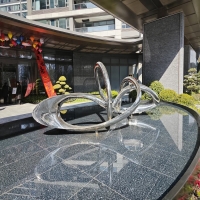Welcome to the website for landscape facilities products and knowledge.
What are the options for adding a built-in warming tray or hot plate to the table?
When considering how to add a built-in warming tray or hot plate to your table, several innovative approaches emerge that blend functionality with aesthetic appeal. The integration of heating elements into furniture requires careful planning, but the result transforms ordinary dining into a consistently warm experience.
One primary option involves custom table fabrication with integrated heating systems. Specialty furniture makers can construct tables with designated warming zones using commercial-grade heating elements embedded beneath heat-resistant surfaces like tempered glass, ceramic, or stone. These professional installations often include precise temperature controls and safety features such as automatic shut-off mechanisms.
For those preferring a DIY approach, retrofitting existing tables presents viable possibilities. This method typically involves creating a recessed compartment within the table structure to house a commercial hot plate or specifically designed warming tray. The key consideration lies in ensuring proper insulation between the heating element and table material to prevent heat damage while maintaining consistent warmth.
Another creative solution incorporates induction technology into table design. Induction warmers can be installed beneath non-metallic surfaces, providing heat only when compatible cookware is placed above them. This approach offers enhanced safety as the surface itself doesn't become dangerously hot while efficiently warming dishes.
For flexible arrangements, modular warming systems present an attractive alternative. These consist of standalone warming units designed to fit within custom-cut table openings, allowing for removal when not needed. Such systems often feature plug-in operation and removable cleaning components.
Safety remains paramount in all implementations. Proper electrical wiring, thermal protection systems, and stable installation are non-negotiable elements. Additionally, selecting materials that withstand repeated heating cycles without warping or releasing harmful fumes is essential for long-term satisfaction.
The choice between these options depends on your specific needs regarding budget, frequency of use, and desired aesthetic. Professional installations offer seamless integration but at higher cost, while DIY methods provide customization opportunities requiring technical skill. Whichever path you choose, adding a warming element to your table can revolutionize entertainment and daily dining, keeping meals at ideal temperatures throughout gatherings.
Related search:

Recommendation
Abstract art sculpture, stainless steel metal sculpture, large-scale water feature sculpture